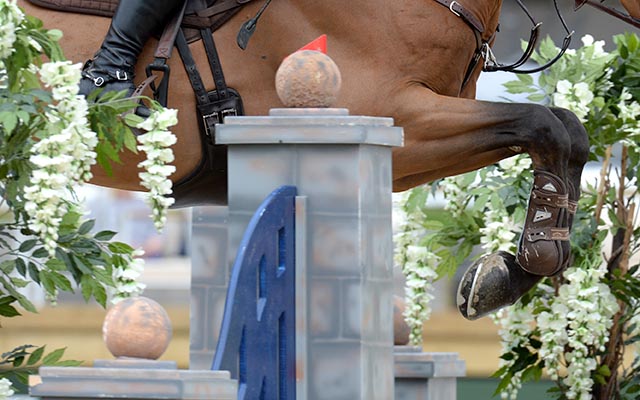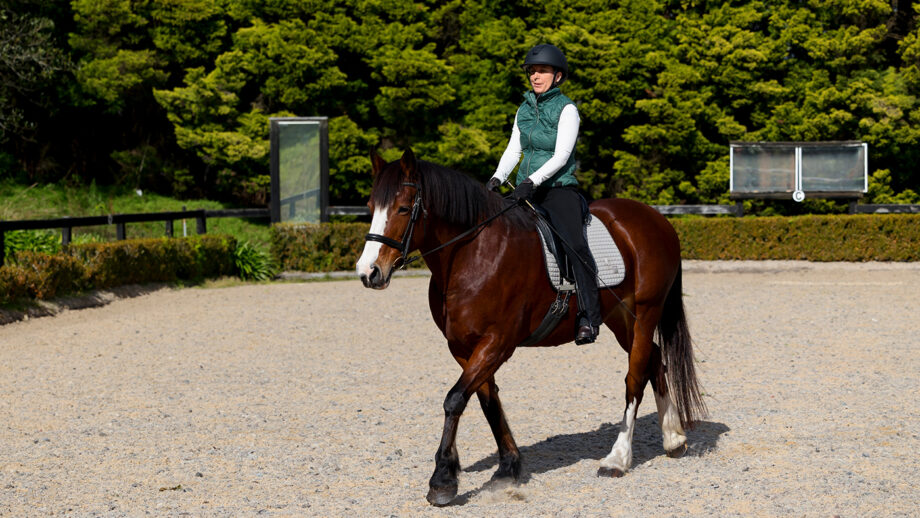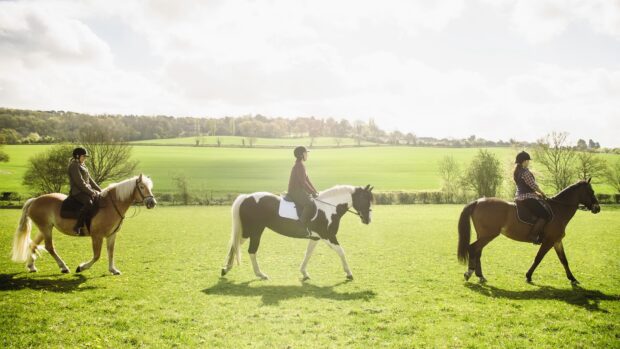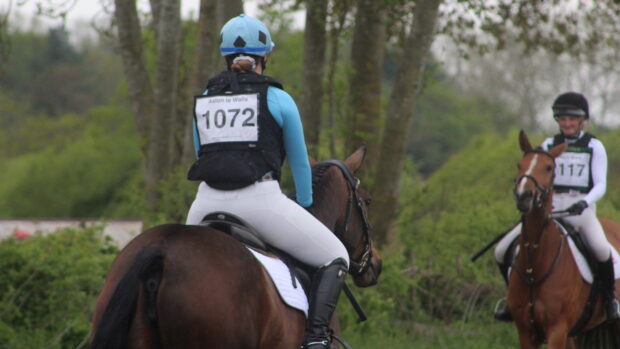Riding instructor and founder of The Power of Walk, Diana Waters, explains the benefits that can be enjoyed by you – and your horse – by learning to be fully present in the moment
Riding offers a powerful opportunity to tune in to your horse and your own body. When you use mindfulness techniques to become more aware of how you’re sitting, breathing, and moving in the saddle, you create the conditions for a deeper connection and synchronisation with your horse.
But as busy equestrians, exercising our horses can be something that we have to fit into our extremely busy lives around juggling work and doing the essential horse care tasks – this means slowing down can feel hard, almost impossible.
If you’re aware that a sense of urgency has a tendency to creep into your riding time, then here is an exercise that will give you an opportunity to notice what’s happening in your body and how it relates to your horse’s movement.
For maximum benefit, don’t try to “do it right”. Simply work through the steps and focus on the feelings you notice, without any judgement.
What you need: A quiet space to ride at walk, ideally on a long rein or with someone leading your horse so you can focus on your body.
Time: 5–15 minutes, or longer if you’d like to explore further.
Instructions
1. Let the walk carry you – begin by allowing your horse to walk freely. Give them the space to choose the pace while you turn your attention inward.
2. Breathe into being present – notice your own breathing. Is it steady? Shallow? Begin to breathe more fully into your diaphragm. Let this rhythm help you arrive fully in the moment.
3. Check in with your feet and legs – notice your feet in the stirrups. Are they resting lightly, or pushing down hard? Let your ankles, toes, and calves soften. Feel the contact your legs make with the horse’s sides. Is it even and light all the way from thighs down to calves? Allow that contact to be relaxed and responsive.
4. Feel the motion – as your horse walks, their ribcage swings beneath you. Can you feel the swing of the belly left and right? Observe what’s happening and allow your legs to move side to side with the belly.
5. Soften into your seat – bring your attention to your seat. Are you holding tension in your back, hips or seat? Try to soften and allow yourself to rest more deeply into the saddle. Can you sense the movement of each side of the horse’s back? See if you can allow your seatbones and hips to move alternately in time with the horse’s back.
6. Lift gently, with ease – now bring a little awareness to your upper body. Without stiffening, gently lengthen through your spine and lift your ribcage. Can you find a feeling of lightness without tension?
7. Relax your arms and face – check in with your shoulders. If they feel tight, shrug them up and drop them. Let your upper arms hang freely, elbows soft. Notice your hands, wrists, jaw. Can you let go of any extra tension? Allow your arms to move naturally with the motion of your horse’s head.
8. Stay curious – throughout, keep returning to what you feel without judgement. You’re not trying to fix anything, just noticing what’s there. The simple act of awareness can begin to create change.
9. Finish softly – before you dismount or move on, pause. Take a breath. How do you feel now compared to when you began? Has your awareness shifted? Has your horse’s walk changed?
The benefits of being truly present when in the saddle can extend to your horse too. Horses are highly sensitive to human energy and the more calm, clear, and grounded you are, the safer and more settled your horse is likely to feel. Relieving tension in your body can help the horse to move more freely too.
Photography by Belinda Taylor
Location: by kind permission of C Horses Equine Assisted Therapy
- To enjoy more expert advice on how to improve your relationship with your horse, subscribe to the Horse & Hound website
You may also be interested in:

Can horses help reduce anxiety? Yes – plus four other ways riding benefits mental health

7 ways to combat negative thoughts when it comes to your riding

Fancy a beach ride, but feel nervous riding in open spaces? This expert advice will help build your confidence so you can enjoy it

‘I’ve never felt this confidence before’: Badminton grassroots winner on the visionary mentoring programme which helped her triumph

Subscribe to Horse & Hound magazine today – and enjoy unlimited website access all year round




